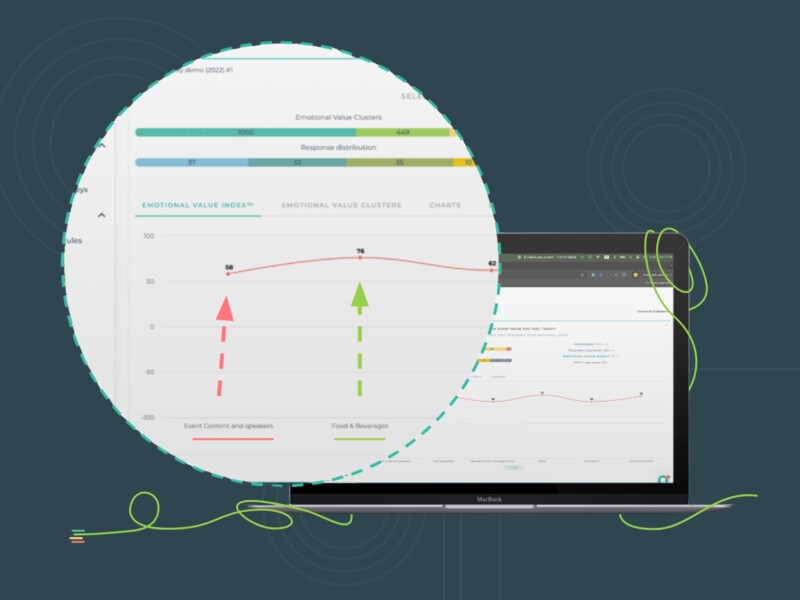As a business owner, you might already be aware that customer emotions – be it indifference, joy, or dissatisfaction, have an impact on your business. But did you know that prioritizing and analyzing customer emotions can benefit your brand in a multitude of ways?
Customer emotions influence many factors like satisfaction, loyalty, advocacy, and brand recognition. Ultimately, all these boils down to higher sales and business growth.
So, how do you measure the impact of customer emotions?
What is Emotional Experience?
Emotional Experience (EE) refers to a customer’s emotional perception of your business. How do customers feel about your brand? What emotions do your products evoke in them? Studying customers’ emotions and their impact on your business is important to cater to ever-evolving customer requirements and remain the frontline of the competition.
The Emotional Value index (EVI®) is the metric used to measure emotional experience. It helps businesses gather, track, and analyze various emotions evoked in a customer throughout the buying journey. As EVI® can be used at any phase in the customer journey, it helps you fine-tune every touchpoint for better performance.
Enriching EVI® Data with Sales Data
EVI® data can be enriched with revenue/purchase data to understand your customers better and make effective decisions. Enhancing the quality of EVI® data this way can provide a better context and more background information. You can also make improvements to your CX strategy and increase the potential of sales.
For example, linking EVI® feedback data with customer purchase size can help you understand what emotions drive the highest sales. Did you know that customers who feel positive emotions towards your products and services spend up to 40% more compared to those who feel negative?
Here’s how you can make correlations between emotions and revenue.
1. Ask your customers
Begin by creating an EVI® survey to ask customers how they feel about your brand or product and why they feel that way! The survey doesn’t have to be very complicated or lengthy to obtain data. As mentioned earlier, you can send the survey at any touchpoint in any phase of the customer journey. At the same time, you can use the survey at both micro and macro-level!
The EVI® survey has to request customers to denote the emotion that best explains their state of mind at the given touchpoint. Generally, the emotions include joy, enthusiasm, trust, surprise, disappointment, sadness, frustration, irritation, and indifference. Additionally, you can also ask an open-ended question for customers to explain the reason behind their answers.
2. Enrich your feedback data with revenue data
Once you have gathered customer feedback, you can cross-analyze the data with other organizational data – more specifically, revenue data. It enhances the value and insights derived from EVI® data. The process of integrating and analyzing these data isn’t complicated. All you need is a reliable and flexible CX data management platform.
With a feature-rich Emotional Experience platform like Feedbackly, enrichment of customer data is no hassle. It is compatible with major CRM and eCommerce platforms to help businesses reduce clutter, perform faster, and achieve more targets. You also get the required training on how to use our analytics from our experts!
3. Learn how emotions impact your revenue
Enrichment of feedback data with revenue data helps you determine how each emotion impacts the sales growth of your business. More importantly, you can identify what emotion drives the highest sales and take necessary measures to evoke it throughout the customer journey.
EVI® data gives you statistics about the magnitude or power of customer happiness. You will get a realistic idea about how positive emotions persuade customers to purchase repeatedly from your business. Also, studies show that the correlation between customer emotions and revenue is very clear, and positive emotions like joy and enthusiasm compel customers to spend more than negative feelings.
Liked this article? Check also this free on-demand webinar:




